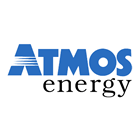energy Star

10 Home Energy Efficiency Tips
1. Wash clothes in cold water to save $63 a year.
2. Install A Programmable Thermostat To Save Up To 10% On Cooling And Heating Costs.
3. Use Your Window Shades. Close Blinds In The Sunny Side In Summer To Keep Out The Hot Sun, And Open Them In Winter To Bring In Warm Rays.
4. Turn Off All Lights, Appliances, And Electronics Not In Use. A Power Strip Can Help Turn Off Multiple Items At Once. (Sometimes The Simplest Things Are Really Effective!)
5. Change To New And Improved Light Bulbs. Reduce Energy Use From About A Third To As Much As 80% With Today’s Increasing Number Of Energy-Efficient Halogen Incandescent, CFLs, And LEDs.
6. Look For The Energy Star Label, The Government’s Symbol Of Energy Efficiency, On A Wide Range Of Consumer Products To Save Up To 30% On Related Electricity Bills.
7. Use Low-Flow Faucets And Shower Heads To Save On Water Bills.
8. Clean Or Change Filters Regularly. A Dirty Furnace Or A/C Filter Will Slow Down Air Flow And Make The System Work Harder To Keep You Warm Or Cool
9. Reduce Water Heater Temperature To 130° F To Save Energy And Money On Heating Water; And Wrap The Water Storage Tank In A Specially-Designed “Blanket” To Retain The Heat.
10. Seal Air Leaks And Properly Insulate To Save Up To 20% On Heating And Cooling Bills, While Also Increasing Home Comfort.
ENERGY STAR
What Is Energy Star?
ENERGY STAR is a widely recognized and trusted label on products that meet strict energy-efficiency requirements set by the U.S. Environmental Protection Agency (EPA). ENERGY STAR certified products are third-party certified and subject to ongoing verification testing.
Products that have earned the ENERGY STAR help you save energy and money without sacrificing performance. By using less energy, these products also help reduce greenhouse gas emissions that contribute to climate change.
Today, the ENERGY STAR label can be found on more than 65 different kinds of products found in our homes and workplaces including lighting, appliances, office equipment, consumer electronics, and heating and cooling equipment. Energy-efficient new and renovated homes, as well as schools, government buildings, and commercial and industrial buildings also can earn the ENERGY STAR.
Learn more at energystar.gov
Tips For Energy Star Certified Home Electronics
ENERGY STAR certified home electronics products help you save energy and money, while protecting the environment. You get all of the features and content you desire, while using less energy. The following tips can help you save even more:
• Plug your electronics into a power strip with an on/off switch, and turn off the power strip when you are not using the products. This is the only way to ensure that the electronics are not using electricity
• Unplug battery chargers or power adapters when equipment is fully charged or not connected to the charger.
• Televisions are now manufactured with multiple screen settings and options that can affect the power consumption of your television. Set your television to the “home” or “standard” setting, which uses less energy. Reducing the brightness can reduce your television’s energy use by 18 to 30 percent.
• Always look for the ENERGY STAR when shopping for new home electronics products.
• When upgrading to new ENERGY STAR certified home electronics, take your old electronics to a state or local collection program, charitable organization, or recycling program that accepts used electronics. Learn more at epa.gov/ecycling.
Energy Star Home Certified Electronics
Home electronics that earn the ENERGY STAR use up to 50 percent less energy and offer all the features and functionality as standard models—saving money on energy bills and protecting the environment. A home equipped with three TVs, set-top boxes, a DVD player, and a home theater-in-a-box that have earned the ENERGY STAR can save more than $475 over the life of the products.
Televisions
Televisions sold in the United States are typically larger, in use more hours each day, and offer more vibrant pictures and advanced features than ever before. Three factors influence the increased amount of energy consumed by televisions: screen size, resolution, and display technology.
Televisions that earn the ENERGY STAR are, on average, 20 percent more efficient than standard models and save energy while they are off and use less energy when they are on. You can find models that have earned the ENERGY STAR across popular television technologies—from basic models to HD televisions, to the largest flat screen LCD and plasma models. Larger ENERGY STAR certified sets (60 inch) are on average, almost 40 percent more efficient.
Set-Top Boxes
The main function of set-top boxes is to receive television signals from cable, Internet, satellite, or over-the-air systems and deliver them to a display and/or recording device such as a digital video recorder (DVR). Set-top boxes are getting more energy intensive; in fact, a home using two set-top boxes is using significantly more electricity than it takes to run a new refrigerator. Set-top boxes that earn the ENERGY STAR are on average 45 percent more efficient than standard models.
Most set-top boxes and cable boxes are given to consumers as part of their contract with a service provider, rather than sold independently at retail stores, so be sure to ask the service provider for an ENERGY STAR certified set-top box. If you already have cable or satellite service, check with your service provider to find out what upgrade options are available.
Home Theater Systems
The television is no longer a stand-alone entertainment item. In order to get preferred content and features, several components are needed to create a complete home theater system.
Today, the typical home theater setup includes a television set with cable or satellite connection, a DVD or Blu-Ray player, a receiver, and two to eight speakers. ENERGY STAR certified audio/video equipment is up to 60 percent more efficient than standard models. The ENERGY STAR can be found on many of the DVD and audio products, including home theater “in-a-box” systems, you need to build an energy-efficient home theater system that delivers quality entertainment value and saves on energy bills.
Cordless Phones
Cordless phones, answering machines, and combination units that have earned the ENERGY STAR use about half the energy of standard units. They incorporate improved energy performance features such as switch-mode power supplies and “smart” chargers which enhance their energy efficiency.
Battery Chargers
Battery charging systems are components used to recharge a wide variety of cordless products, including power tools, small household appliances, and personal care products like electric shavers. ENERGY STAR certified battery chargers, on average, will use 30 percent less energy than standard models. Certified chargers have the potential to save Americans more than $170 million annually, while preventing the greenhouse gas emissions equivalent to those from 200,000 cars.
________________________________________
Help Protect The Environment
Climate change is a real and urgent challenge affecting people and the environment worldwide. Human activities such as electricity production and transportation add significant amounts of carbon pollution to the atmosphere. This carbon pollution, along with other greenhouse gases, is the primary cause of most of the global temperature rise observed over the past 50 years.
Global warming has already led to rising sea levels, melting glaciers, and shifting rainfall patterns, among other changes. Unchecked carbon pollution can lead to long-lasting changes in our climate that threaten human health, society, and ecosystems. To learn more about climate change and what you can do to reduce its impacts, visit epa.gov/climatechange.
________________________________________
Do Your Part
Choosing energy-efficient products and practicing simple energy saving measures reduces the amount of carbon pollution added to the atmosphere. EPA’s ENERGY STAR program offers tips and product information to help you do your part in protecting your family and your community from the effects of climate change now and in the future.
If each TV, DVD, and home theater system purchased in the United States this year were ENERGY STAR certified, we would prevent more than 3 billion pounds of greenhouse gas emissions—equal to emissions from more than 300,000 cars—and save more than $260 million in annual energy costs.
Volunteers In 2023
People We Helped up to 2023
Funds We Collected
Join the OMCAP community to give back to the community!











